Learning Content Strategy That Drives Real Business Results
Learn how to design a learning content strategy that enhances learner experience, increases the ROI of your training programs, and reduces cost.
Learn how to design a learning content strategy that enhances learner experience, increases the ROI of your training programs, and reduces cost.

According to industry statistics, global e-learning spending is expected to reach $457.8 billion by 2026. With such rapid growth, companies can no longer afford a scattered approach to training. A well-structured learning content strategy ensures the learning experience supports both the employees' growth and the organization’s goals.
Without a strategy tailored to your organization’s needs and objectives, there’s no use in investing in L&D programs. It would result in wasted time, misused resources, and disengaged employees. On the other hand, a well-defined strategy turns learning into a dynamic tool for driving performance and growth.
This article explores what a learning content strategy is, its benefits, and how to build one that brings results.
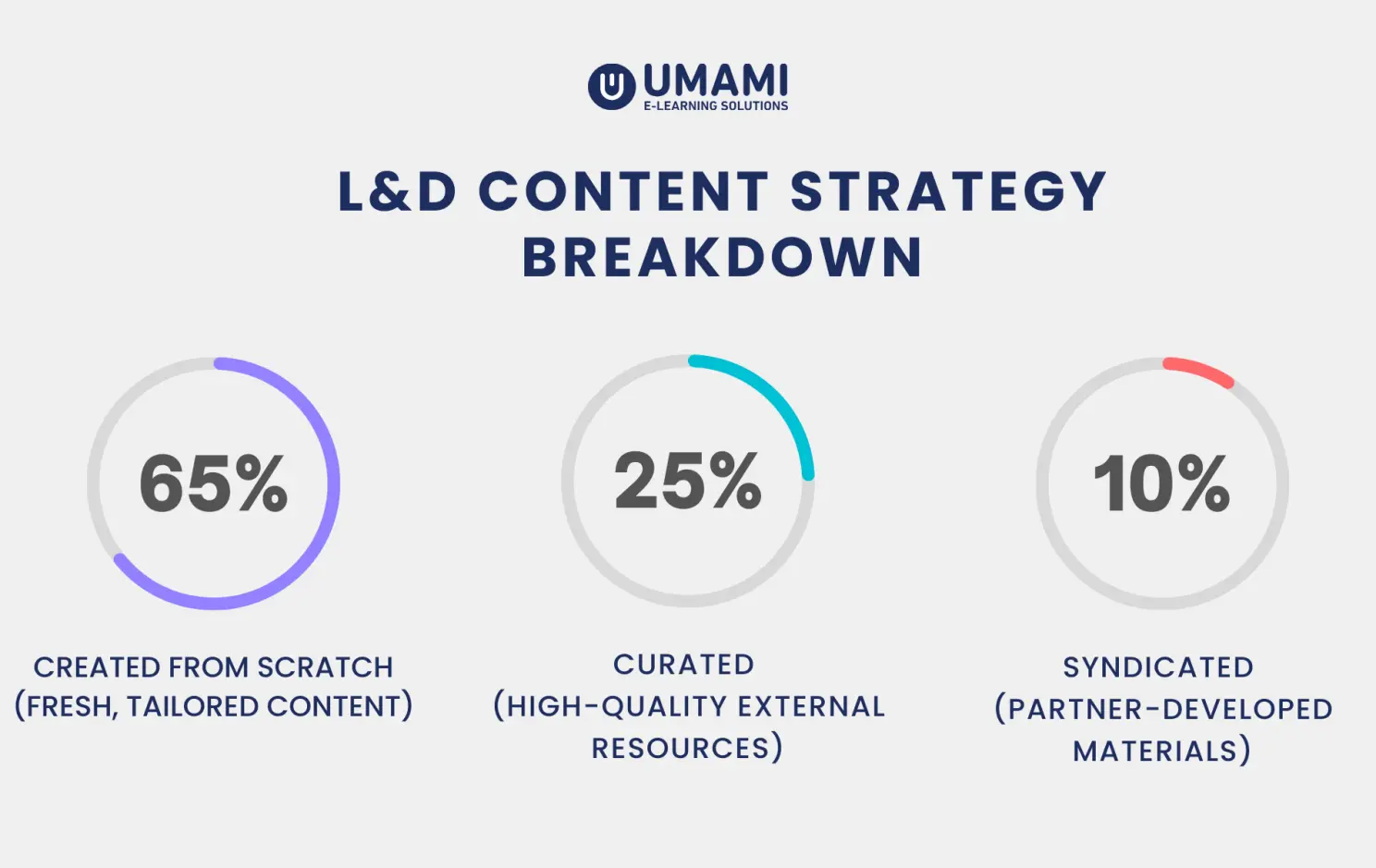
A learning content strategy is more than a training outline. It provides a comprehensive framework that guides how learning experiences are designed, delivered, and refined to meet your organization’s goals. In short, a practical learning content strategy connects what your employees need to know with what your business needs to achieve.
Research by Brandon Hall Group reveals that 87% of organizations recommend aligning learning strategies with business goals. In fact, 75% now consider this as their top L&D priority, according to the Brandon Hall Group HR Outlook 2025. This ensures the content is relevant, up-to-date, and impactful.
Whether you’re onboarding new employees or upskilling your team, a learning content strategy lays out a blueprint that:
One of the biggest challenges in Learning and Development (L&D) is ineffective training content that fails to deliver results. Here’s why you should have a structured learning content strategy for your workplace:
L&D programs go beyond sharing lengthy PDFs or generic training videos. Employees now want training that adapts to their pace, interest, and career goals. Research shows that almost 91% of employees prefer personalized training that caters to their needs and skill gaps. In addition, 69% of these employees learn better by watching videos and short tutorials.
A learning content strategy helps you create training programs that reflect these preferences. Through regular audits, content mapping, and format selection, a learning strategy ensures the content is tailored for your employees’ needs. As a result, training completion rates go up, which positively impacts the ROI.
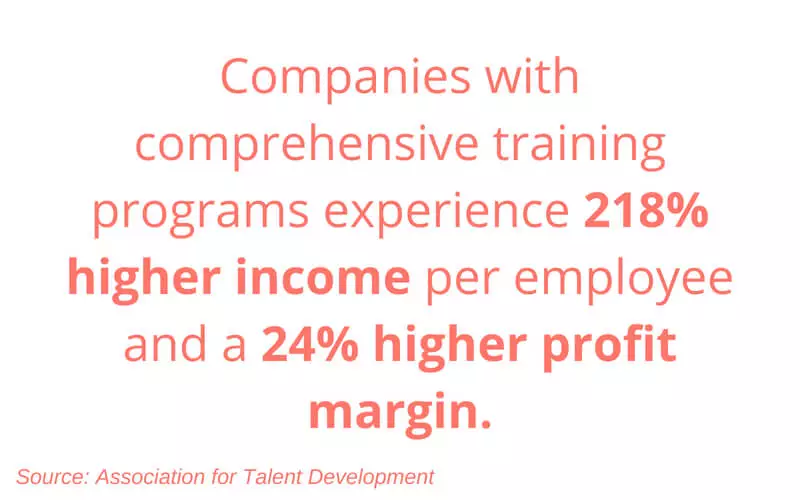
To keep up with the digital advancements in the industry, organizations are investing in tools like LMS and AI-powered course creation. By aligning these learning initiatives with business goals, companies can significantly increase their return on investment.
According to research, companies with comprehensive training programs experience 218% higher revenue and a 24% increase in profit margins. These numbers make a strong case for building L&D strategies that directly impact business growth.
Coursebox eLearning Platform: Coursebox offers an advanced eLearning platform that supports learning with its range of features. It automates time-consuming tasks like course creation, grading, and assessment, which saves you time and cuts training costs.
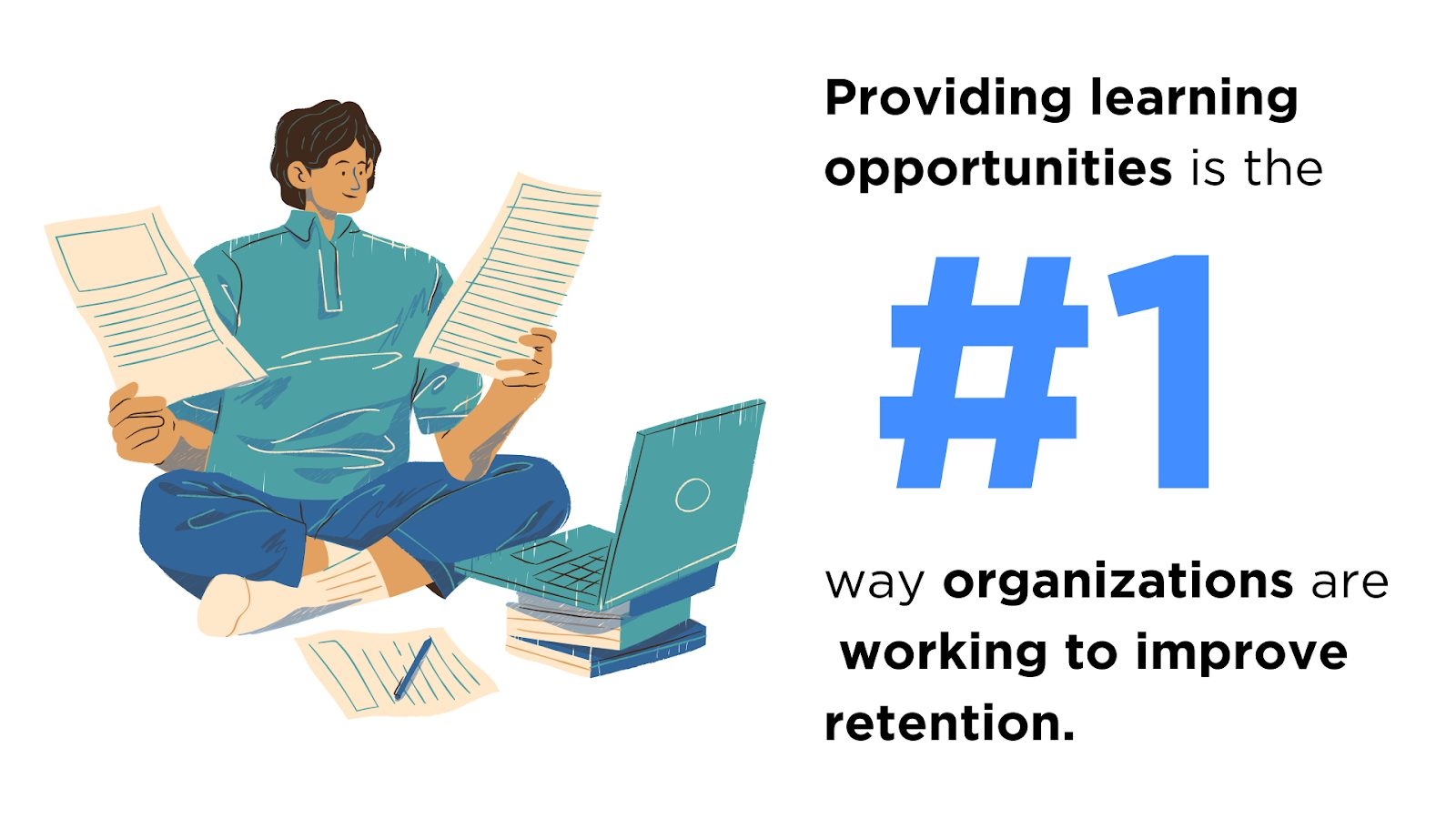
Without a strategy, learning content can quickly become outdated and irrelevant. A clear framework helps organizations produce better content that’s up-to-date, engaging, and aligned with the evolving employee needs.
Implementing a carefully structured plan keeps employees engaged and enhances retention rates. Consumer-focused formats, such as videos and learning simulations, further enhance the learning experience.
In fast-growing or remote organizations, training can become inconsistent across different departments and locations. This results in a knowledge gap, which may affect the performance of specific departments. A learning content strategy introduces consistent standards across teams and departments.
This helps establish a uniform learning experience for all employees and preserves institutional knowledge. Even if a team member leaves or changes roles, there’s minimal risk of knowledge loss.
Without a system in place, organizations risk wasting valuable time and resources. They often create content that already exists or is of no use to their employees. However, with regular content audits, they can identify gaps, retire outdated material, and even utilize existing content for future programs.
This provides a practical content outline that ensures every module serves a purpose. As a result, L&D teams can spend time on building high-priority learning experiences that benefit the employees.
Designing a learning content strategy that delivers real business outcomes takes more than great content. It also requires a solid plan, clear intent, and continuous refinement. Here’s a step-by-step guide to building a strategy that works:
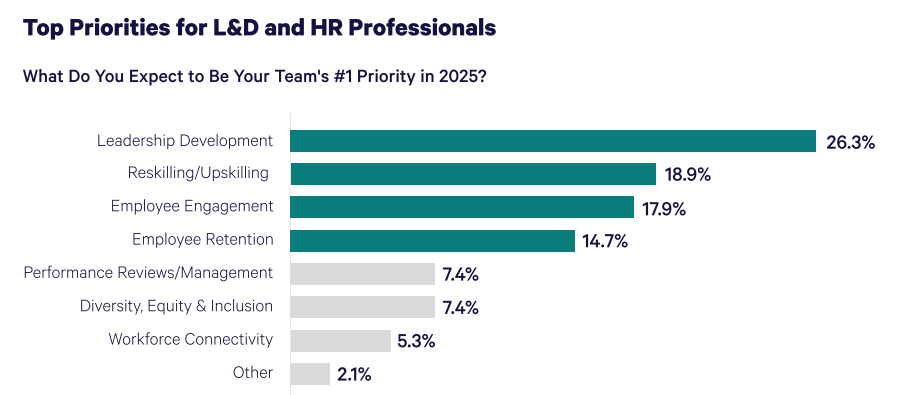
The best advice when making a learning content strategy is to start with the final objective in mind. Beyond offering learning opportunities, your strategy should support your business outcomes. For example, reducing onboarding time, increasing employee retention, or improving customer satisfaction are all goals that provide direction for your content.
Industry data shows that upskilling and reskilling are the top priorities for L&D pros. This shows the need to align the learning strategy with workforce development. With increasing competition in the industry, this might give your organization a distinct competitive edge.
Even the most engaging content fails if it’s not designed for the people consuming it. That’s why understanding your learners is essential. Build detailed learner personas that reflect job roles, current skill set, work environments, and content preferences. Tools like LMS analytics, one-on-one interviews, or employee surveys help gain detailed insights.
You also need to account for the generation gap within the organization. Gen Z and millennials, who make up almost half of the workforce, are changing the game. Interestingly, only 6% of Gen Z prioritizes reaching a leadership position. The rest all focus on their on-site learning. Many view AI as an integral part of the workplace culture, highlighting the need for relevant training programs to utilize it.
Before you build anything new, take a look at what you already have. A thorough content audit reveals what’s working, what’s outdated, and what can be reused for future programs. Start by mapping your current learning material to your organization’s goals.
Next, flag duplicated content, irrelevant modules, and material that lacks engagement. This helps prevent redundancy and lays the foundation for relevant, purposeful development. More than just a routine task, a content audit serves as a lens, highlighting both the strengths and weaknesses of your existing content.
Once your audit is complete and you have a content map, it’s time to create a structured plan. This should include actionable timelines, priorities, and delivery strategies. Here’s what you need to keep in mind:
Taking these factors into account ensures your learning content is not only relevant but also aligned with broader business goals and measurable outcomes.
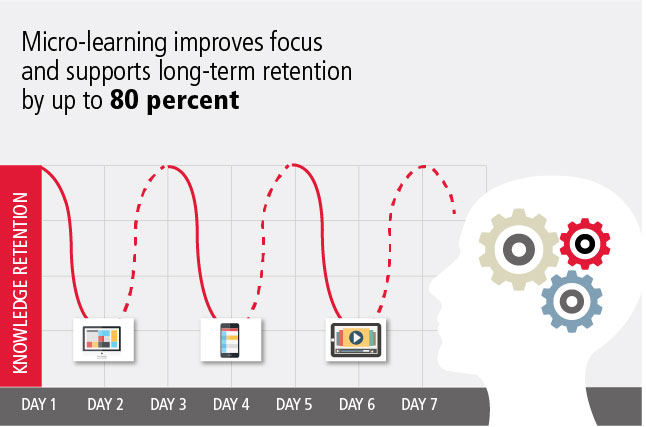
Your learning content strategy should include a mix of formats to match learning goals, content types, and employee preferences. The right combination of format and tools makes your training more accessible, scalable, and effective. Here are some practical options:
Used by over 85% of organizations, microlearning videos are short, focused learning experiences that last between 2 and 5 minutes. They're ideal for delivering training programs and addressing attention span challenges. Studies show that microlearning boosts retention rates by 80%, making it one of the most effective and time-saving formats.
Engagement rates go up when learners actively participate in the training. Interactive videos, role-playing, real-world simulations, and quizzes keep the audience engaged and boost knowledge retention by up to 75%. When learners engage in their training, they learn faster and show better results.
Combining self-paced online courses with instructor-led training allows organizations to balance flexibility with human interaction. It will enable employees to learn according to their own schedules while gaining the benefits of real-time feedback.
AI can automate every part of the training process, from creating tailored training programs to automating assessment grading. In fact, 49% of the employees consider training as the most important factor for AI adoption at the workplace. By helping scale learning programs without sacrificing personalization, AI has become a vital component of modern L&D strategies.

A Learning Management System (LMS) with advanced analytics provides insights for building an actionable learning content strategy. The performance metrics help identify content gaps, measure performance, and tailor programs to learners' needs. This helps in implementing and polishing your learning content strategy.
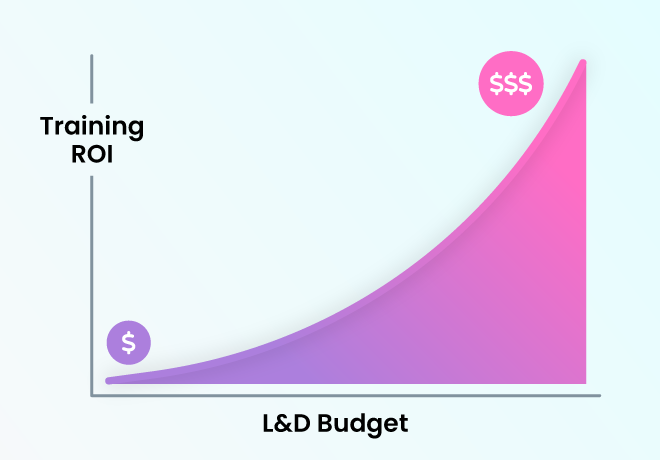
Tracking metrics ensures your strategy is delivering results. Here are a few key metrics to keep your eye on:
Your employees want training that helps them grow in their roles. Without a tailored learning content strategy, organizations risk losing top talent and missing business opportunities. They may also waste resources on content that fails to deliver results. An effective learning content strategy ensures you avoid these issues by optimizing your learning content for employees’ needs and business outcomes.
If you’re ready to bring your content strategy to life, sign up with Coursebox now. It helps you design, optimize, and deliver tailored content that resonates with your workforce. From content creation to analytics, Coursebox provides all the tools to make learning meaningful.
Google offers an excellent example of a goal-oriented learning content strategy. It implemented multiple learning initiatives, including the G2G program, whisper courses, and Google Developers Community. These programs prioritize employee-led learning and are designed to deliver content that suits individual learning preferences.
The 3 C’s of content are connect, create, and cultivate. Connect refers to understanding your target audience and your business goals and objectives. Next is creating engaging and relevant content tailored for your audience. And finally, repurposing and cultivating existing content to ensure it stays up-to-date.
The core components of a learning content strategy are planning, creation, and evaluation. This helps create a highly relevant and high-performing training program that provides measurable outcomes and lasting impact.
The basics of a learning content strategy begin with knowing your learners. Align their needs with your business goals to ensure purpose-driven content. Audit your current learning material to see where it lacks and make a content plan that bridges those gaps. Finally, measure the outcome of your training to see if your strategy was effective.
Tools that help implement a learning content strategy at your workplace include an LMS, an analytics platform, and a feedback system. By choosing an AI-powered platform like Coursebox, you get all these tools and features in one platform. It offers AI-powered course creation, learner progress tracking, and productive feedback throughout the learning journey.
